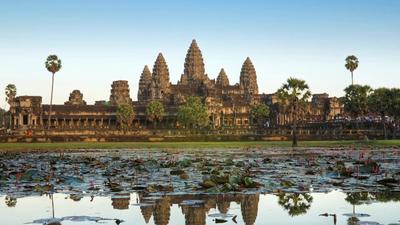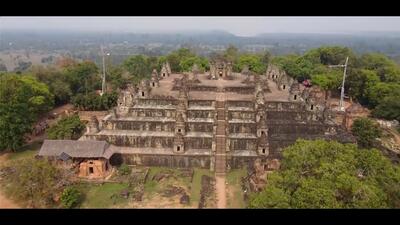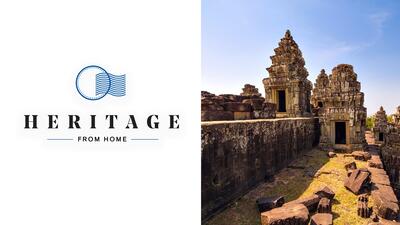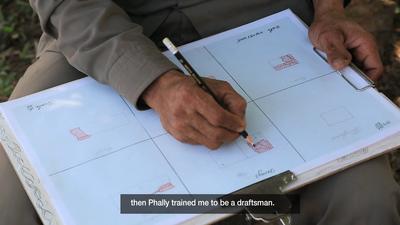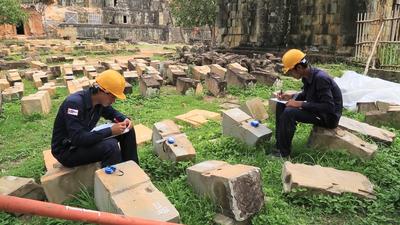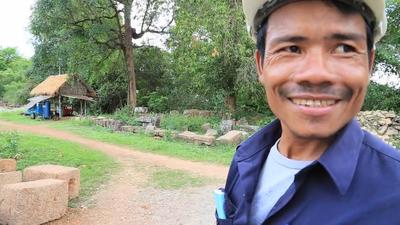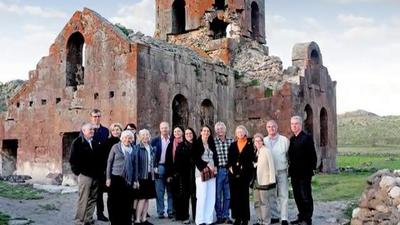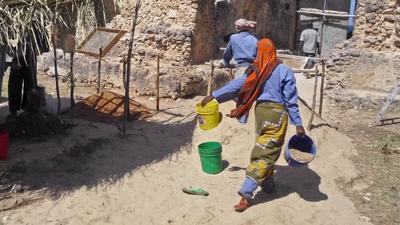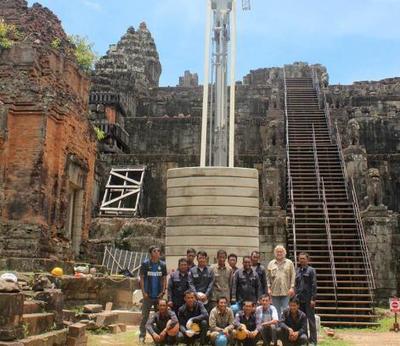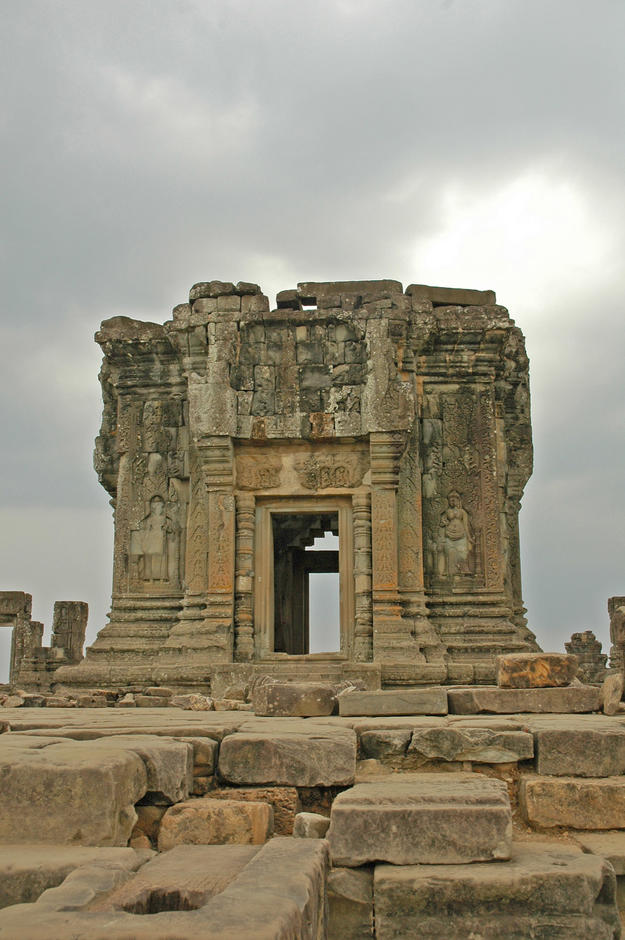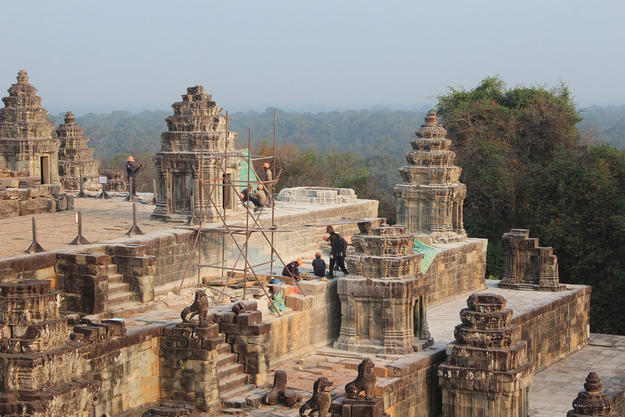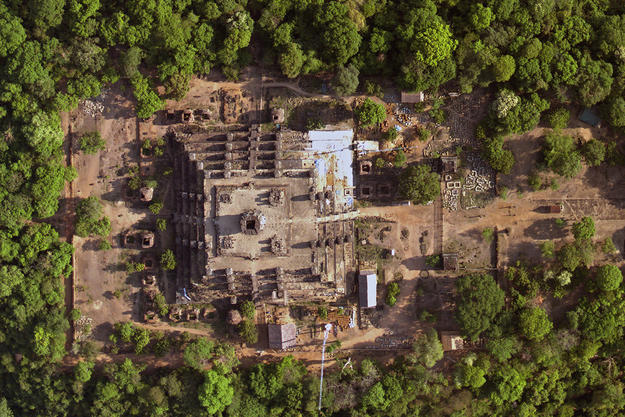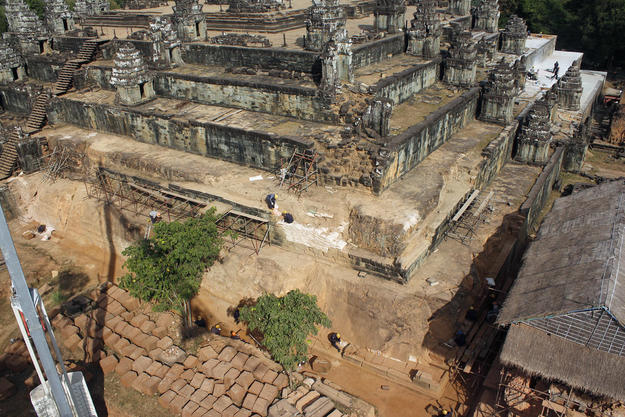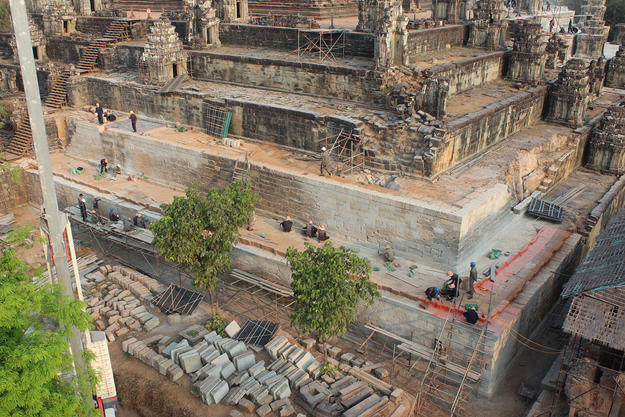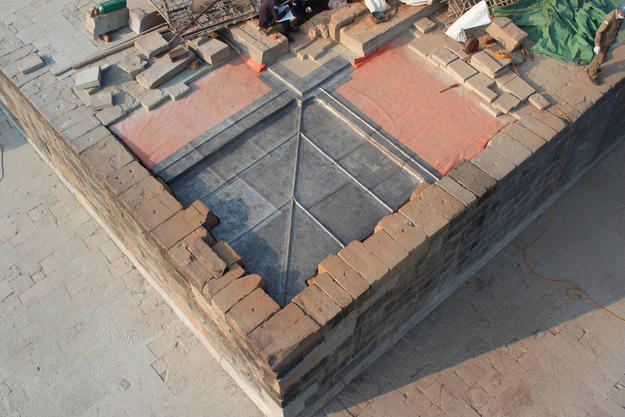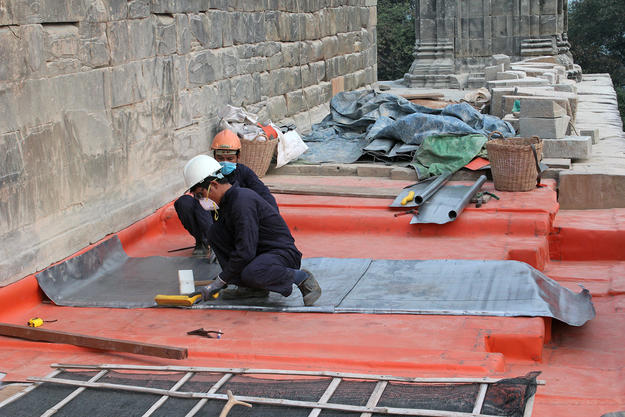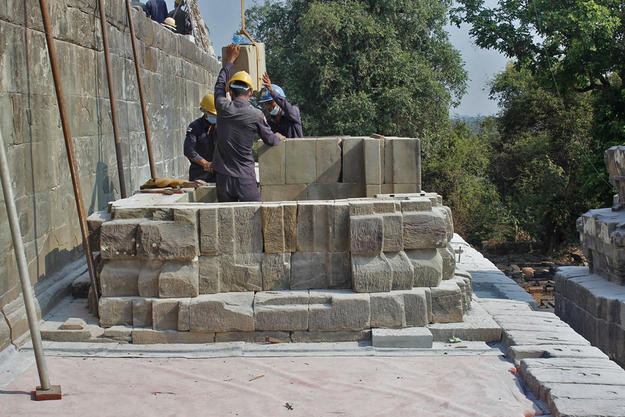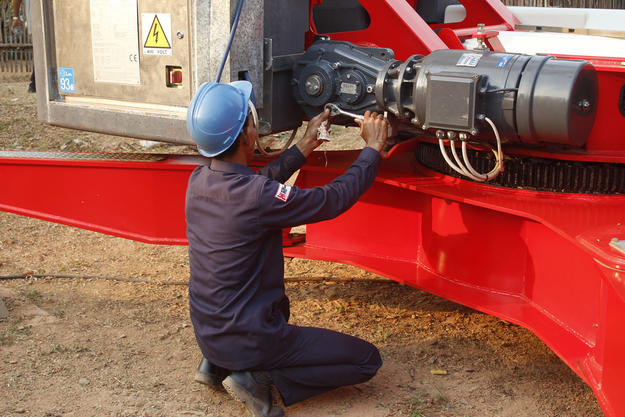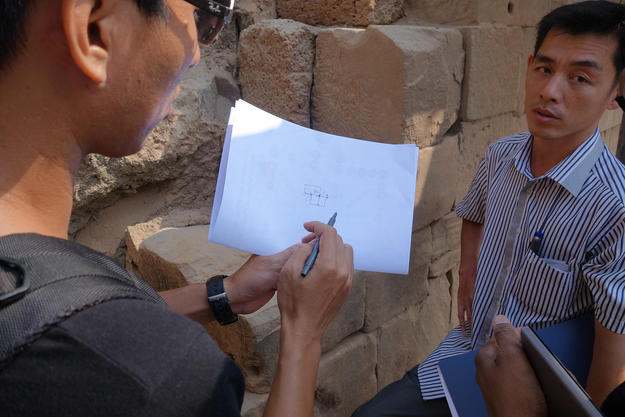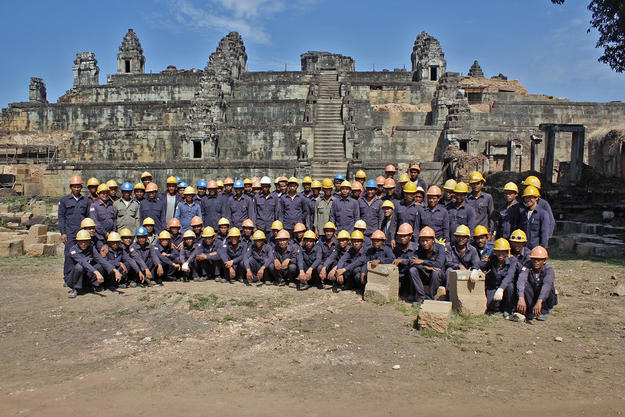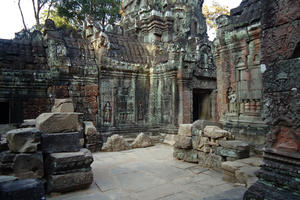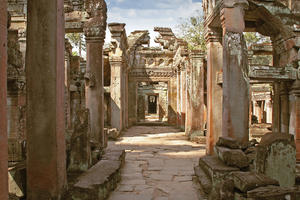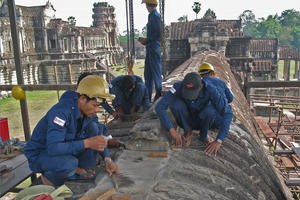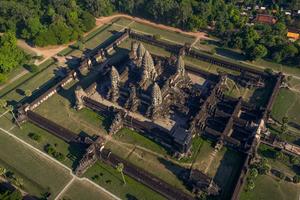Phnom Bakheng
How We Helped
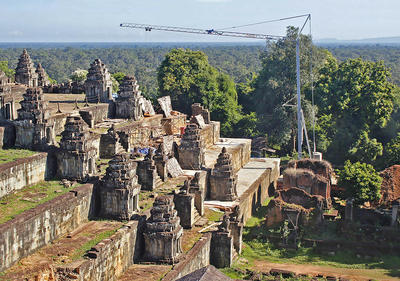
Phnom Bakheng
Site History and Significance
A Magnificent Hilltop Temple
Phnom Bakheng, the state temple of the first Khmer capital in the Angkor region, survives as one of the world’s greatest architectural treasures. The temple was constructed between the late ninth and the early tenth century by Yasovarman I as the centerpiece of his new capital, known as Yasodharapura. The site was abandoned only a few decades after its completion, but its privileged hilltop location makes it unique among the temples of Angkor. Its stepped pyramid construction is a built representation of Mount Meru, the center of the physical and metaphysical universes in dharmic religions. Shrines and guardian lions adorn the seven levels of terraces that make up the pyramid; decreasing in size towards the top of the temple, these enhance the impression of the temple’s height. Five shrines on the top platform, arranged in a quincunx formation, represent the five peaks of Mount Meru. In the sixteenth century, an attempt was made to construct a large seated Buddha around the central shrine, but this has since been dismantled. The central temple was surrounded by multiple brick towers, of which little still remains. Today, Phnom Bakheng is a popular spot for panoramic views of Angkor’s landscape, often enjoyed by visitors at sunset.
Our Involvement
A Visionary Plan
In 2004, World Monuments Fund (WMF) began to survey, analyze, and plan for the conservation of the site, thanks to a grant of $550,000 from the U.S. Department of State. The result of this effort, built on the contributions of international and local experts, was the 2007 Phnom Bakheng Conservation Master Plan. Since then, WMF and the APSARA National Authority have collaborated to advance the vision of this comprehensive plan through emergency repairs, carefully executed conservation interventions, and improved visitor management. Support from the U.S. Department of State was generously renewed in 2008, 2011, 2013, 2015, 2017, and 2020, helping to expand the scope of the project. Additional funds have been provided by the Ralph E. Ogden Foundation and the Robert W. Wilson Challenge to Conserve Our Heritage. Throughout the project, the APSARA National Authority has contributed additional personnel and materials. The total financial commitment to this project has been more than $5 million.
An Ambitious Project Underway
With a major grant from the U.S. Department of State, WMF launched the second phase of the project in 2008: stabilizing and restoring the east half of the central temple and improving water management at the site to ensure the temple’s preservation well into the future. Conservation of the east half was completed in January 2019. Conservation began with documentation of current conditions and proceeded with the disassembly of walls, terraces, and other unstable structures to allow for the structural repair of the terrace foundations. To repair the foundations underneath the terraces, the bedrock was pinned using rock bolts, and new stones inserted in areas of loss when necessary. The waterproofing plan involved covering the foundation with a PVC membrane and, in some cases, an added layer of lead sheets. All original stones were cleaned and conserved, while missing wall sections were reconstructed using stone blocks retrieved from the side of the hill of Phnom Bakheng, as well as new stones from the original quarry.
In 2023, WMF will inaugurate a new phase of work at the site, which will include the conservation of the west half of the temple and the construction of a visitor center.
Sustainable Visitor Management
Though the rapid rise in tourism has brought welcome economic growth to Cambodia, the impact of visitors has imperiled Phnom Bakheng’s stability. In 2011, World Monuments Fund and the APSARA National Authority jointly elaborated a set of policies designed to alleviate overcrowding at Phnom Bakheng and to mitigate the effects of visitors on the physical condition of the monument. This plan, which limits the number of visitors at the top platform during sunset, is a milestone in the ongoing effort to improve the management of Angkor as a tourism destination.
The People Behind the Project
Since the early 1990s, World Monuments Fund’s activities at Angkor have allowed dozens of Cambodian employees to learn alongside international specialists, who have helped WMF develop and implement appropriate conservation programs. The Phnom Bakheng project is carried out by World Monuments Fund’s skilled Cambodian staff, with oversight from Cambodian professionals and in collaboration with foreign experts. It enables the employment of more than 100 full-time workers, most of whom live in the villages within the archaeological park, highlighting the deep and lasting connection between the community and its heritage. WMF’s local workforce includes individuals who have been employed since the early 1990s and have continued to mentor younger workers over the years.
Support Angkor Archaeological Park
In January 2024, World Monuments Fund celebrated 35 years of commitment to Angkor Archaeological Park. Our work there continues today thanks to the help of individuals like you. Use this link to direct your gift to WMF’s next stage of work at this irreplaceable site of shared heritage.
 |
 |
Learn More
World Monuments Fund safeguards cultural heritage around the globe, ensuring our treasured places are preserved for present and future generations. Sign up for our newsletter to receive regular updates on our projects, stories from the field, upcoming events, and more!
World Monuments Fund’s work at Phnom Bakheng has been made possible, in part, by the U.S. Department of State; the U.S. Ambassadors Fund for Cultural Preservation (AFCP) and U.S. Embassy Phnom Penh; The Robert W. Wilson Charitable Trust; Anonymous; Denise Gwyn Ferguson; Wendy and Robert Brandow; and Nora McNeely Hurley and Manitou Fund.
Videos
